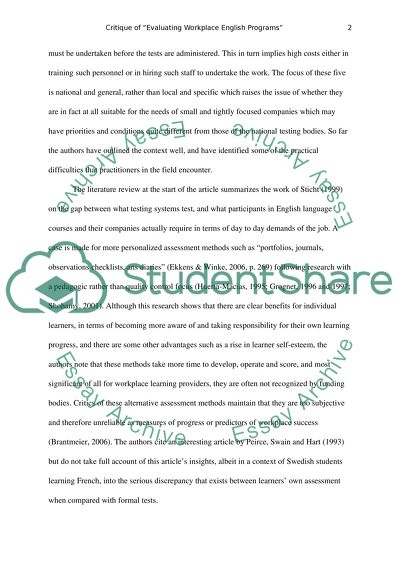Cite this document
(“Critique of the Article Evaluating Workplace English Programs Essay”, n.d.)
Critique of the Article Evaluating Workplace English Programs Essay. Retrieved from https://studentshare.org/education/1432639-evaluating-workplace-english-programs-critique
Critique of the Article Evaluating Workplace English Programs Essay. Retrieved from https://studentshare.org/education/1432639-evaluating-workplace-english-programs-critique
(Critique of the Article Evaluating Workplace English Programs Essay)
Critique of the Article Evaluating Workplace English Programs Essay. https://studentshare.org/education/1432639-evaluating-workplace-english-programs-critique.
Critique of the Article Evaluating Workplace English Programs Essay. https://studentshare.org/education/1432639-evaluating-workplace-english-programs-critique.
“Critique of the Article Evaluating Workplace English Programs Essay”, n.d. https://studentshare.org/education/1432639-evaluating-workplace-english-programs-critique.


